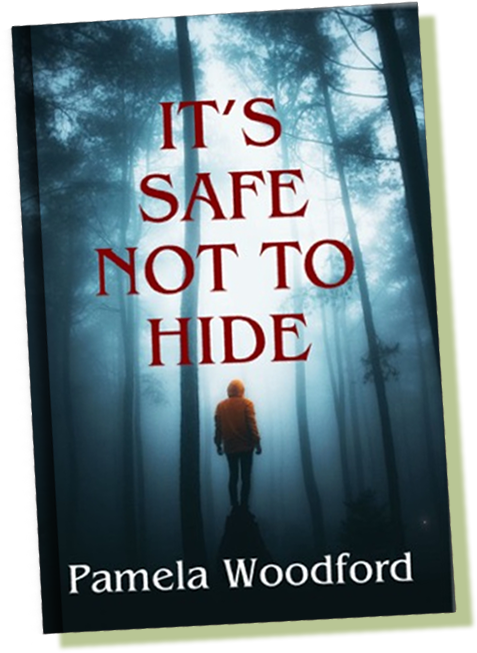
It’s Safe Not to Hide
By Pamela Woodford
Hello and welcome to my debut novel ‘It’s Safe Not to Hide’
To you the reader, young adults, parents, grandparents, teachers, carers, therapists, all walks of life whoever you are and wherever you may be.
Whether you are an avid reader or maybe this is the first time you’ve opened a paperback and put your head into a novel. I hope you found it time well spent. Thank you for choosing to read ‘It’s Safe Not to Hide’ and trusting me to introduce you to characters with such interesting lives. It’s Safe Not To Hide is a novel for young adults. It is a story of hope, heartache and resilience, addressing important issues such as gender fluidity, leukaemia, sexual exploitation, computer addiction, autism, bereavement and parent-child domestic abuse.
A gripping page turner that will break your heart and then mend it again.
This fictional account of a group of teenagers who seek the services of a therapist is a gripping and life-affirming read. It’s written by an author with first-hand experience of working with teenagers; and the difficult themes that are tackled in the book are done so with great sensitivity and care. I would thoroughly recommend this book for readers of YA and adults who have a curiosity about how modern teenagers live their lives, the relationships they form and the challenges they may face.
This is a stunning debut from a talented author – I look forward to more books from her in the future!
I have now made a start on my next novel and enjoying every minute!
I am also the author of the published Brighter Little Minds series, for children with emotional difficulties.
This inspiring workshop gives you powerful, non-intrusive ways to help distressed young people







As I have said, children are very receptive to new ways of learning, and metaphor can create new possibilities.
Metaphor within stories can build a sense of expectancy that the problem can be resolved. Restating a child’s problem with non-threatening metaphors can help them completely review the situation.
Metaphor and stories are a highly effective way to help children and adults as it bypasses the brains natural resistance to change.
When using metaphor, the brain goes on an inner search for a pattern already encoded. If the eyes are closed there is no outside information, therefore the occipital lobes go on an inner search for some pattern already stored. The imagination is then in use. I often tell the stories without showing he pictures as this encourages the use of the imagination.
Most children have a fantastic imagination and are very accepting of stories.
A child can employ fantasy to change or avoid an unpleasant situation; to gratify unmet needs; remember the past or invent the future.
Children want to experience life to the greatest extent possible; therefore cultivating a child’s imagination is not only appealing but can be highly effective.
Using the right story can get to the heart of the matter and bring about swift, positive change.
The metaphorical therepuetic stories in “The Brighter Little Minds Series” contain “embedded suggestions” through visual imagery’
Part of the brain is a metaphorical pattern-matching organ.
We don’t store feelings we store patterns with different senses on them.
No child can flourish unless the patterns of greater possibilities are first grasped in imagination.
